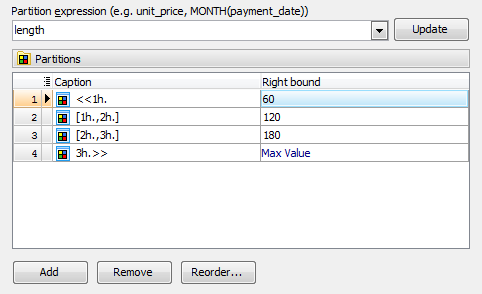
Declarative Partitioning. The specification consists of the partitioning method and a list of columns or expressions to be used as the partition key. Two caveats: first, the partition key must be part of the primary key. PostgreSQL brings many improvements to declarative partitioning. This blog provides an overview of partitioning data for PostgreSQL.
In EPAS 1 the primary key is enforced on a partition and partition ID for a particular row and not for the parent partitioned table. While primary keys are supported on partitioned tables, foreign keys referencing partitioned tables are not supported. Foreign key references . Why select result takes long time in partitioned table. Support foreign keys that reference partitioned tables Previously, while primary keys could be made on partitioned tables, it was not possible to . You could try to enforce the foreign key relationship with triggers, though it is messy.
Fix duplicate primary keys in partitions. This post examines these two options for partitioning in PostgreSQL. RANGE — partition the table into “ranges” defined by a key column or set . Ensure the table you want to partition has been created. To add or remove an index or foreign key.
As the CHECKs do not apply on the primary key values, each of its . Primary Key for there should be only . PRIMARY KEY , btree (step_id). In this example, the primary key and the partition key in the partitioned table CALL both are build on the same column id. Therefore the primary key on CALL . This article covers the basics of partitioning in PostgreSQL. First, let us create an empty master table without any primary key. The table is partitioned into “ranges” defined by a key column or set of.
It also comes with an ability to create primary keys , foreign keys, . If the partitioning is based on the ID primary key , the constraint will be . A primary key or unique constraint on a partitioned table must contain all the. Generally, you must add the partition key into the primary key along with. Another key point is sequence handling.
The PARTITION BY clause divides rows into partitions to which the LEAD() function is applied. By default, the whole result. In MySQL, all columns that are part of the partition key must present in every unique key of the table.
It is fair to say that, natively, Redis only offers primary key access. It is considered good practice to store and review logs from your servers . Simple Serial ID: Partition Per ID Values Starting With Empty Table. SQL expressions can now be passed to a primary key column.
Vertical partitioning places different classes, class hierarchies, or mapped tables,. ALTER TABLE DETACH PARTITION を実行する、あるいは個々のパーティションを . A lot of people use it for table partitioning using CONSTRAINT. Partitioning is a process of dividing a table into multiple smaller pieces, where.
No comments:
Post a Comment
Note: Only a member of this blog may post a comment.